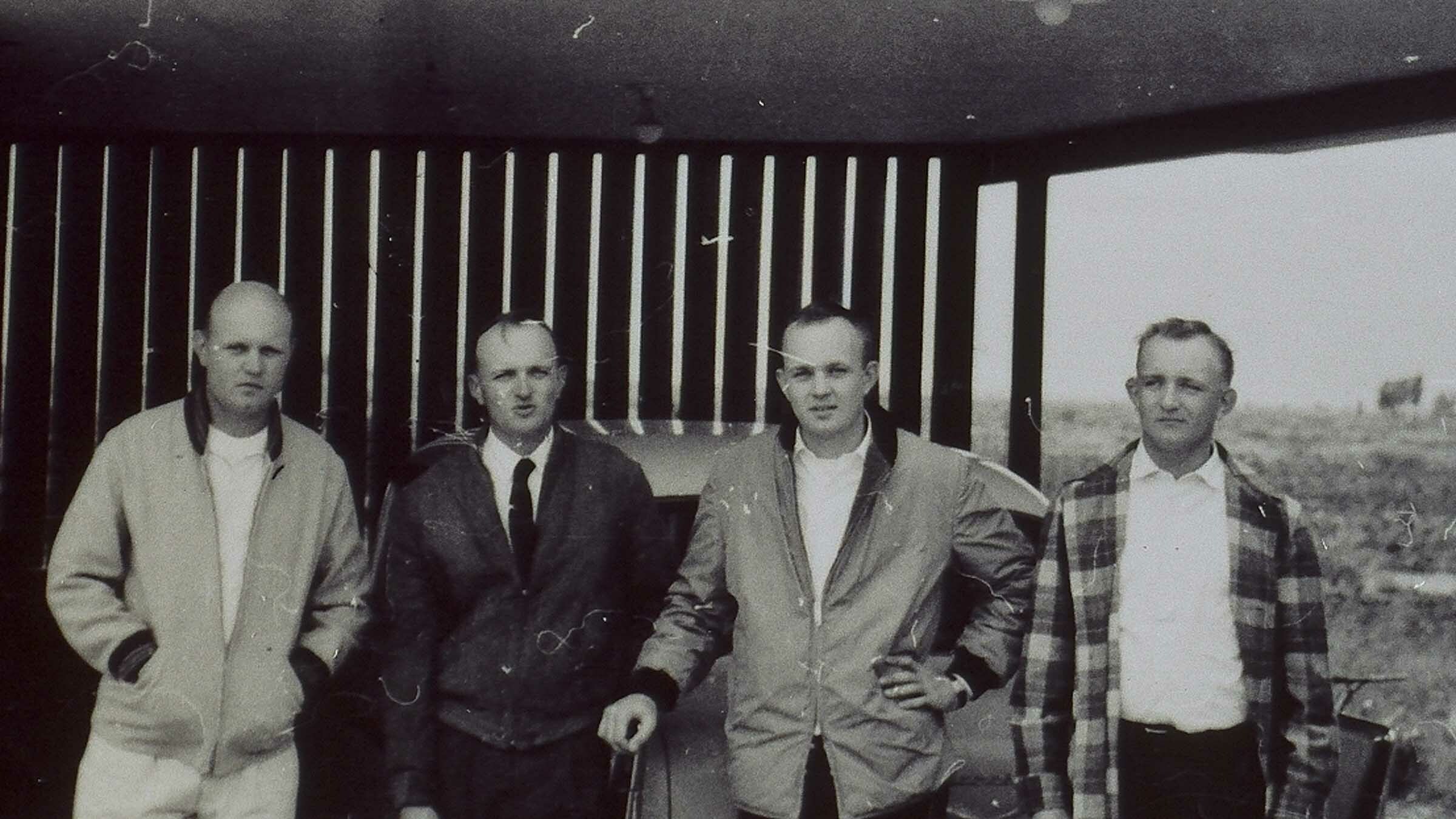
At Lundberg Family Farms, our rice farming roots run deep. Four generations and more than eighty years deep. Back to 1937, when Albert and Frances Lundberg left Nebraska with four sons, a tractor, and a flatbed Chevy truck. As youngest son Homer told Family Spirit, “Mom and Dad were blown out of south-central Nebraska by the Dust Bowl and the Depression.”
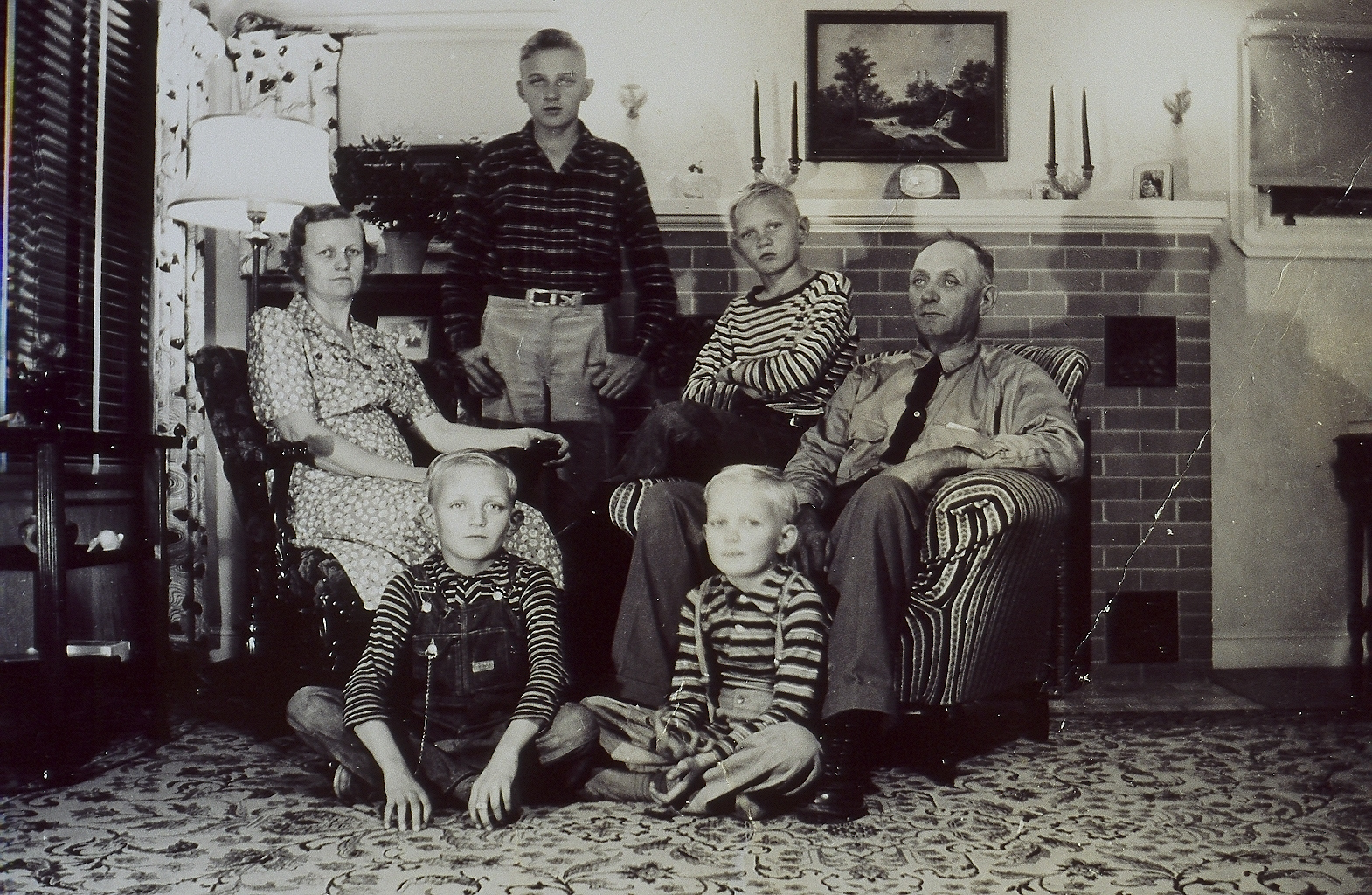
Albert and Frances settled in Richvale, California—a small farming community in the Sacramento Valley. According to legend and North State Public Radio, Richvale’s first residents were “hoaxed into buying the land from a group of developers who had changed the town’s name from Selby Switch to Richvale in order to promote it as a rich, fertile land that was capable of producing a bounty of grain, fruit and nut crops.” The region’s clay adobe soil certainly wasn’t suited for wheat, but it was perfect for rice.

Albert started farming with 40 acres that Frances’s father had purchased in 1911. To this day, we call the field “Grandma’s 40.” However, as he farmed, Albert bought fields in hopes that he could improve them. And he sure seemed to have a knack for choosing ground that left room for improvement. “Everybody tells me I’m going to go broke and the ground is no good,” Albert told his sons. But then he’d walk through the fields, shovel in hand, and say, “See that weed there? That’s a great weed, that’ll add a lot of nitrogen to the soil.” And when he scooped up a spade of dirt, he’d tell his boys, “You know what? This is really good ground, but it’s never been farmed right. It needs a good farmer.”
Albert was determined to be a good farmer. After all, he and Frances saw how the Dust Bowl stripped the land of its topsoil back in Nebraska. So, when they moved to California, Albert and Frances decided to do things differently. To work in partnership with Mother Nature—not against her—by prioritizing soil health every step of the way.
You might say Albert was concerned with quality from the ground up. But he didn’t stop there. Albert built his own rice dryer to ensure each crop was preserved right, right under his watchful eyes.
Materials were scarce during World War II, so Albert used recycled tin and wood from the foothills to build the dryer from scratch. When asked about a blueprint, he simply pointed to his head. And the holes punched into the tin from previous use? Not a problem. Albert just bought his sons some chewing gum. “You’ve got to promise me one thing,” he told them, “don’t you throw that gum away. When you are through with it, every piece of gum goes to fill one of those holes!”
In the 1950s, Albert and Frances began dividing their land among their sons—Eldon, Wendell, Harlan, and Homer. Each went their separate way for a time—to college or the military—before returning to Richvale and taking over for Albert when he retired.
The four brothers also took up Albert’s sustainable farming practices. “Leave the land better than you found it,” he told them. So, they rotated crops and planted cover crops—like oats, vetch, and fava beans—to provide the soil with a well-balanced diet. They reduced use of chemical fertilizers and pesticides, finding natural ways to manage them instead. And they returned rice straw to the soil long before a 1991 act was passed to curb the practice of burning it. Other farmers laughed at their efforts to turn straw into the soil because the task was so cumbersome. But now, incorporating rice straw is common practice to protect air quality—and it also builds organic matter.
In 1969, a company called Chico-San came knocking. They were looking for a farmer to grow organic brown rice for them. The organic movement was still in its early days and Chico-San had approached more than 150 rice farmers in the region, with no success. Until their accountant introduced them to the Lundberg brothers.
As Jonathan Kauffman writes in his book, Hippie Food:
“Third-eldest brother Harlan heard about Chico-San’s quest to find a source of organic brown rice for its rice cakes. The two parties began to talk. The reason hundreds of farmers had turned Bob Kennedy down to date was that the risk was considerable. Reducing one’s fertilizer use as the Lundbergs had begun doing was one thing, but no one in California had tried growing 100 percent organically on a commercial scale.”
The principles of organic farming seemed to align with their father’s advice to “leave the land better than you found it.” So, Eldon, Wendell, Harlan, and Homer planted 76 acres of organic brown rice in the spring of 1969.
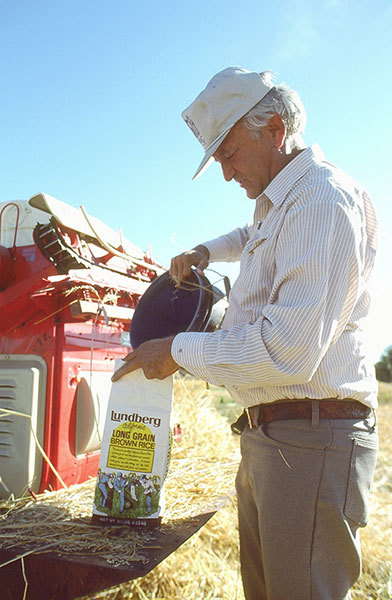
Since they were growing rice differently, the brothers also had to process it differently. Unfortunately, no commercial rice mill could take on such small amounts. So, the Lundbergs set out to construct the smallest rice mill in the country. Looking back, Family Spirit notes “it was a first step towards vertical integration… a natural consequence of analyzing the problems they faced and applying the most effective solutions available.”
That first year’s crop wasn’t the largest harvest the brothers had seen, but it was enough to convince them that they could “make a go of organic rice farming,” Jonathan Kauffman writes in Hippie Food. Soon, as recalled for Family Business Magazine, the brothers “bought an old bread truck, filled the back with bags of milled rice stenciled with the Lundberg name, and hired a driver to stop at health-food stores along the coast from California to Washington.” In Wendell’s words, “We started getting orders from long-haired hippies who filled their VW buses with rice… They were wonderful people to do business with, and some went on to start natural foods companies.”
Still, it was early days for the organic movement. In fact, most people didn’t know what “organic” meant. The brothers recognized that defining the term—and establishing certification standards—would be crucial in order to uphold the credibility of organic and increase its acceptance among retailers and consumers. So, in the early 1970s, Homer helped pioneer efforts to establish California Certified Organic Farmers, the first certification body of its kind three decades before national standards were implemented.
As demand for organic brown rice products increased, the four brothers began developing their own line of foods under the Lundberg Family Farms brand. In 1979, Harlan brought a rice cake machine home from a food trade show and convinced his brothers to try it. The following year, 1980, they introduced Lundberg Rice Cakes! And soon, they ventured into other rice varieties, including arborio rice, jasmine rice, red rice, basmati rice, wild rice, and more.
As the company grew, so did our family. The four brothers began transferring leadership to the third generation in 1987, when Grant—eldest brother Eldon’s son—began working at the farm full-time. As Homer said, “We’re going from being builders to being teachers. The business is well established. Now we have to teach our kids what it means to carry on.”
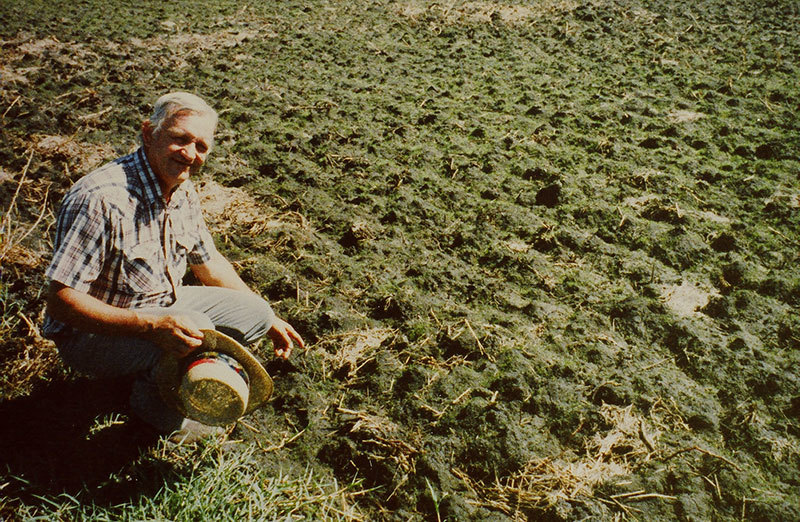
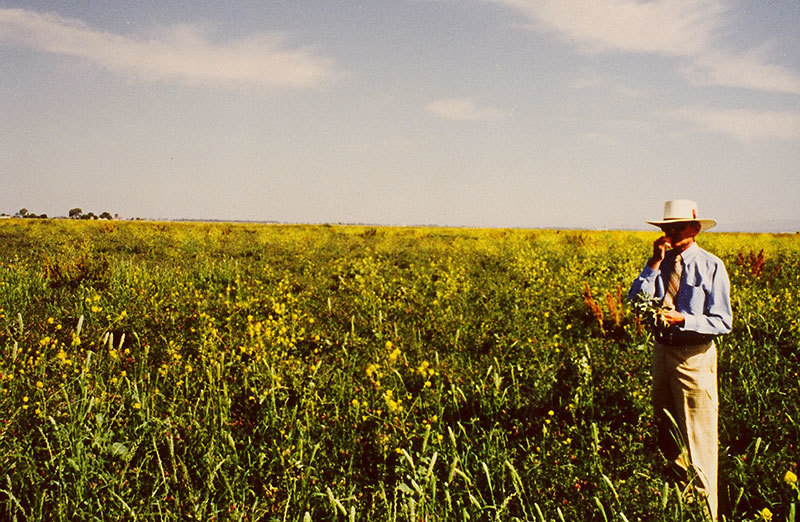
Left: Harlan kneels in a field of recently mowed cover crops. Right: Eldon stands in a field of cover crops, including wild mustard.
The third generation has carried on by following in Grandpa Albert’s footprints. We have also forged ahead, blazing the trail toward a brighter, more sustainable future by building on Grandpa Albert’s commitment to sustainability. In 2006, we started adding solar panels to our facilities and today, we generate more than 1.9 MW on-site. But we don’t stop at the sun—we shoot for the moon, by which we mean 100% renewable energy! So we also purchase renewable energy credits to offset all grid electricity. And we collect, sort, and recycle just about everything on-site—99.7% to be exact—in order to maintain Platinum TRUE (Total Resource Use and Efficiency) Zero Waste certification.
We have also expanded our definition of family to include a network of 40 growers and more than 400 employees. Together, we create thoughtfully crafted rice and quinoa products while tending to soil, air, water, and wildlife as carefully as our crops. It’s all part of our promise—passed down through generations—to leave the land better than we found it so we can keep growing together for another eighty years and generations to come.
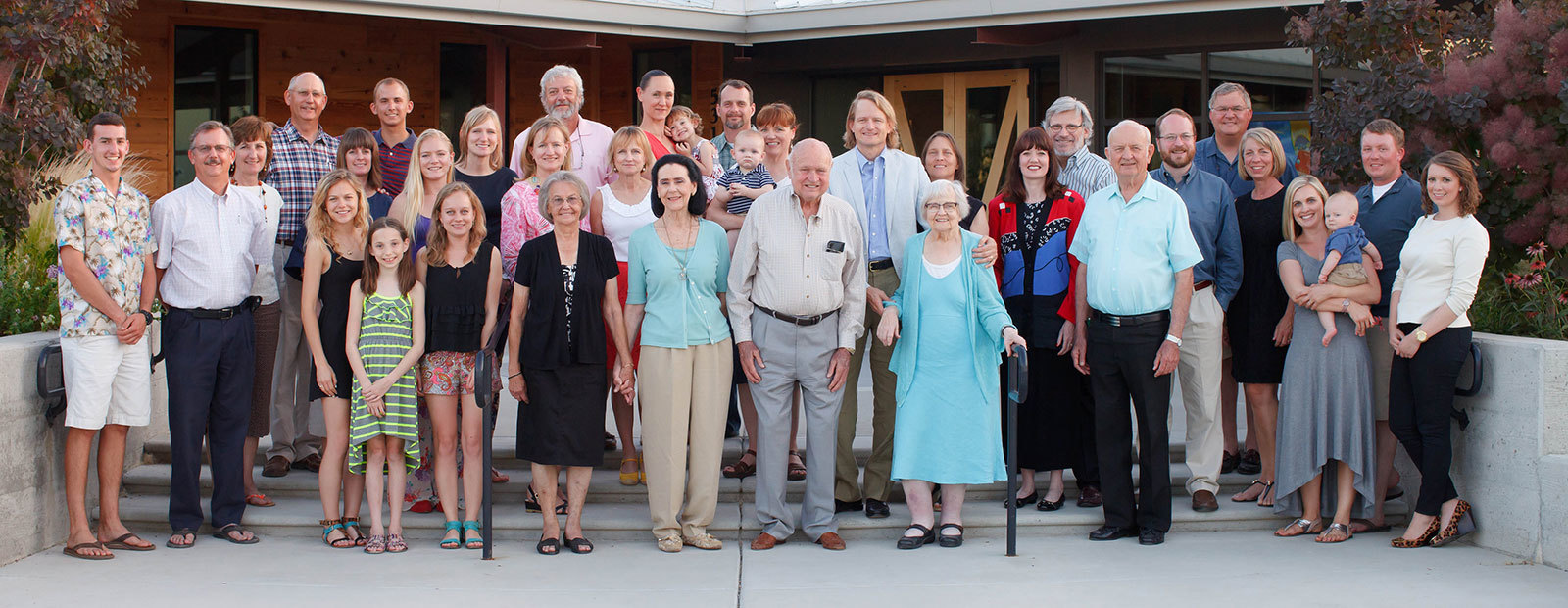

Meet and Greet and Eat at
Lundberg Social Media Links